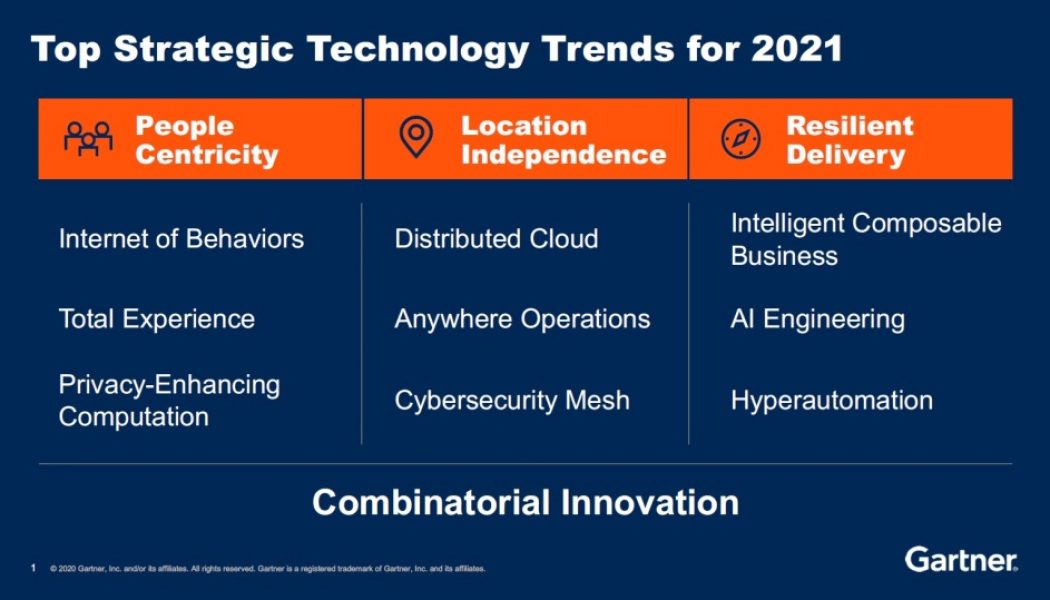We enter 2021 in a very different place from where we were at the start of 2020. For CIOs, the COVID-19 pandemic has presented enormous challenges, but there is a silver lining. Organizations have come to recognize the importance that networking, and more broadly, the IT function can have on the business, including how fast change can be implemented, even under such stressful circumstances.
As we begin the new year, with the coronavirus continuing its grip on the globe, organizations have to take the experiences and learnings from the previous year and apply them to their IT strategies if they are to find success.
Here are the networking trends for 2021 which can assist CIOs in ensuring organizations stay one step ahead in the future:
1. The emergence of the hybrid workforce
/* custom css */
.tdi_3_00e.td-a-rec-img{ text-align: left; }.tdi_3_00e.td-a-rec-img img{ margin: 0 auto 0 0; }
Despite recent advances in vaccines for COVID-19, many employees may still not fully return to the office until late 2021, and in many cases, not at all. As a result, a permanent hybrid workforce is emerging, where employees work from home, the office, or anywhere else – wherever they have a secure and reliable connection.
To facilitate these changes, organizations are now thinking about lessons learned from the pandemic to make networking, security, and overall IT programs more flexible and dynamic. IT has an important role to play in pushing forward ambitious forms of digital transformation, even accelerating existing planned transitions, emboldened with how the workforce has adapted to what has become known as the “new normal”.
2. A changing dynamic in network security
With the maturation of the cloud and the growth of edge networking with its myriad endpoints – all accelerated by the explosion of IoT and the rise of the hybrid work environment – how security is defined and implemented is becoming part of the network architecture, and not some bolted-on component of the enterprise IT environment.
Previously, security experts essentially started with a policy and then designed a network topology that in turn satisfied policy. That dynamic is drastically changing. Networking solutions have evolved to offer significant degrees of separation, where policy gets programmed only when and where it is needed.
We predict that Zero Trust network architecture solutions will remain a core piece of effective security with traditional IT workloads moving out of the Edge into either the cloud or SaaS environment. The vacuum left behind will eventually be replaced by OT/IoT specific workloads at the Edge.
Furthermore, with the implementation of 5G, the networking architecture must contend with multi-access edge compute (MEC) workloads – both private and public – requiring dynamic approaches to security policy that must evolve beyond the user-centric workflows that Zero Trust is primarily optimized for today.
3. A shift in focus to end-user satisfaction
Looking ahead, it will no longer be sufficient for CIOs to simply keep the network infrastructure up and running. The metric du jour is user satisfaction, which is tied to employee productivity that can ultimately impact business profitability.
Networking and security teams are becoming increasingly focused on dynamic experiences that end-users want and expect with the services and applications they choose to use for improved productivity. Instead of asking just what kind of devices are connecting to the network, they will also be required to focus on maintaining flexibility and agility while minimizing risk. By applying the appropriate security measures, CIOs can better facilitate this increasingly dynamic IT environment.
Ultimately, CIOs will want insights beyond the network itself and into availability and performance applications that the users and business leaders care about. They will not be as interested in how esoteric aspects of the network are performing, but rather, will be more concerned about whether a specific user had a poor Zoom experience.
4. Improved networking automation solutions
Tied to understanding the needs and experience of end-users is the maturation of network automation. In the data centre, the adoption of automation is farther along, as changes are driven mostly in a naturally hierarchical structure and thus easier to control through automation scripts. The Edge (including LAN and WAN), on the other hand, is a more chaotic environment because changes, such as human and device behaviour patterns, are triggered by factors that are not totally within ITs control.
Heightened by the pandemic and the rise of hybrid work environments, there is a big need for leveraging AI and machine learning models to sense changes as soon as they occur and respond to the ones that seem persistent, even if for a short period of time. According to a recent survey of 2 400 IT decision-makers across the globe, 35% plan to increase their investment in AI-based networking, as they seek more agile, automated infrastructures for hybrid work environments.
We predict that the maturity of deployed solutions that provide this learning component of automation at the Edge will improve significantly in 2021. Expect to see significant progress in combining these with APIs and other automation tools that will deliver on the promised efficiencies and insights that IT leaders crave.
In 2020, businesses and the economy were rescued by a raft of communication technologies developed over the past 40 years, ranging from security and cloud connectivity to managed and supported applications over the network.
Now in 2021, the networking trends highlighted here can provide CIOs with the tools to be better equipped for navigating the unpredictability of today and beyond, as well as position IT as the crucial function businesses need to successfully manoeuvre whatever the future holds, from pandemics to accelerating shifts in work culture trends and environments.
By Mandy Duncan, Country Manager for South Africa at Aruba











